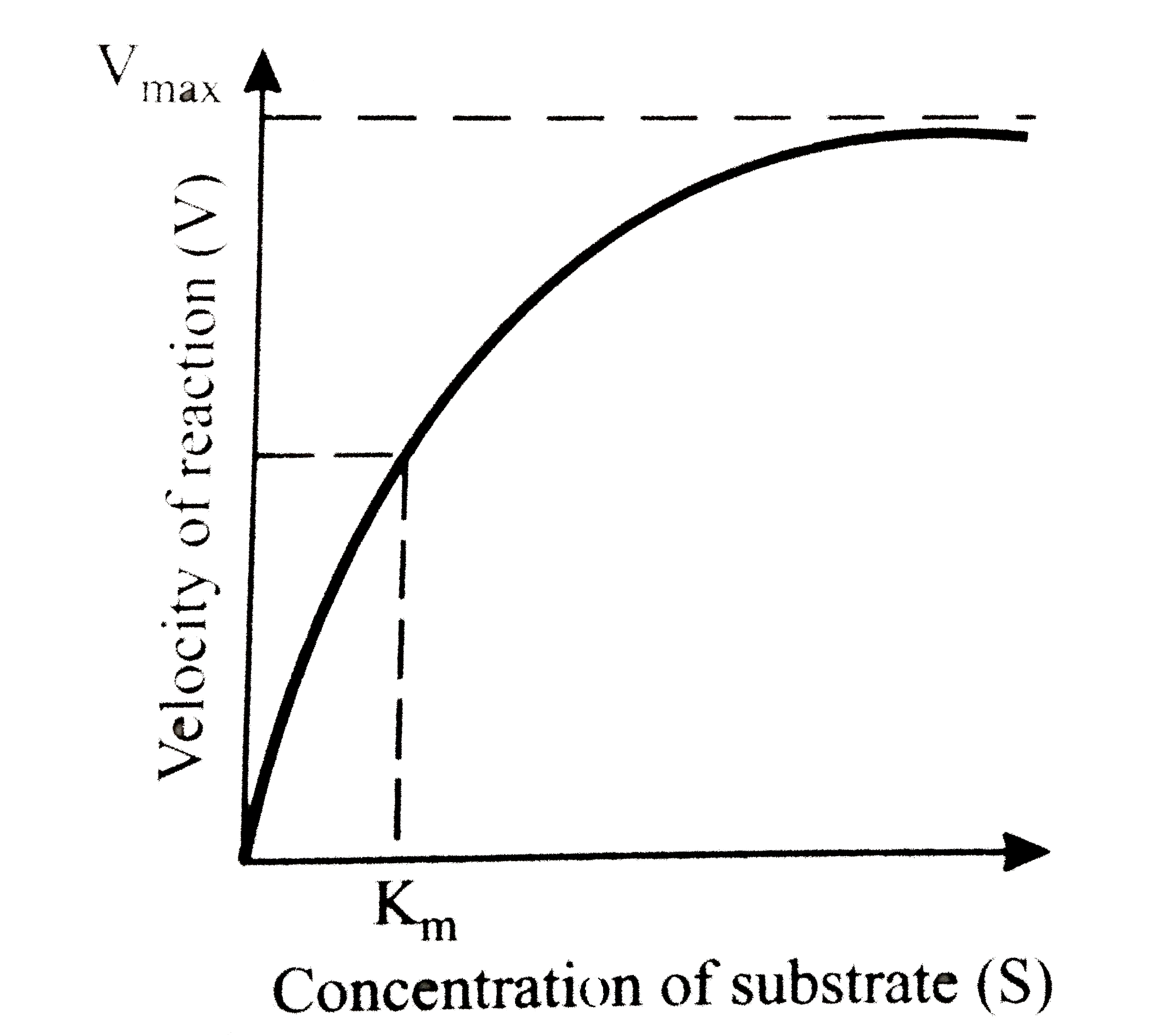Km value is expressed as the substrate concentration at
Vmax
12Vmax
Vmax×2
Vmax×4
The correct Answer is:B
To solve the question regarding the Km value, we need to understand what Km represents in enzyme kinetics.
1. Understanding Km:
- The Km value, known as the Michaelis-Menten constant, is a crucial parameter in enzyme kinetics. It indicates the substrate concentration at which the reaction rate is half of the maximum velocity (Vmax) of the enzyme.
2. Defining Vmax:
- Vmax is the maximum rate of the reaction when the enzyme is saturated with substrate. At this point, all active sites of the enzyme molecules are occupied by substrate.
3. Relationship between Km and Vmax:
- The Km value is specifically defined as the substrate concentration at which the reaction rate is half of Vmax. This means that when the substrate concentration equals Km, the rate of reaction is Vmax2.
4. Choosing the Correct Option:
- Given the options:
- A) Vmax
- B) Half of the Vmax
- C) Vmax×2
- D) Vmax×4
- The correct answer is option B: Half of the Vmax, since Km is defined as the substrate concentration at which the reaction rate is half of the maximum rate.
Final Answer:
The Km value is expressed as the substrate concentration at half of the Vmax.
---
- The Km value, known as the Michaelis-Menten constant, is a crucial parameter in enzyme kinetics. It indicates the substrate concentration at which the reaction rate is half of the maximum velocity (Vmax) of the enzyme.
- Vmax is the maximum rate of the reaction when the enzyme is saturated with substrate. At this point, all active sites of the enzyme molecules are occupied by substrate.
- The Km value is specifically defined as the substrate concentration at which the reaction rate is half of Vmax. This means that when the substrate concentration equals Km, the rate of reaction is Vmax2.
- Given the options:
- A) Vmax
- B) Half of the Vmax
- C) Vmax×2
- D) Vmax×4
- The correct answer is option B: Half of the Vmax, since Km is defined as the substrate concentration at which the reaction rate is half of the maximum rate.
The Km value is expressed as the substrate concentration at half of the Vmax.
Topper's Solved these Questions
- BIOMOLECULESBOOK - AAKASH SERIESCHAPTER - BIOMOLECULESEXERCISE - EXERCISE - I (Enzymes Inhibition)
10 Videos
- BIOMOLECULESBOOK - AAKASH SERIESCHAPTER - BIOMOLECULESEXERCISE - EXERCISE - I (Classification and Nomenclature of Enzymes)
24 Videos
- BIOMOLECULESBOOK - AAKASH SERIESCHAPTER - BIOMOLECULESEXERCISE - EXERCISE - I (Properties & Nature of enzyme Action)
11 Videos
- BIOLOGICAL CLASSIFICATIONBOOK - AAKASH SERIESCHAPTER - BIOLOGICAL CLASSIFICATIONEXERCISE - EXERCISE-III (Previous AIPMT/NEET Question)
37 Videos
- CELL CYCLE AND CELL DIVISIONBOOK - AAKASH SERIESCHAPTER - CELL CYCLE AND CELL DIVISIONEXERCISE - Exercise-III
18 Videos
Similar Questions
Knowledge Check
At optimum temperature and pH, time required to reach maximum velocity of a reaction is 8 seconds, then what will be the time when substrate concentration is Km ?
 A4 secB16 secC1 secD2 sec
A4 secB16 secC1 secD2 sec
Km value is dependent upon
View SolutionMichaelis - Menten constant (Km) of an enzyme is substrate concentration at which the reaction attains
View SolutionAmong the statement given below, which statements /s is / are correct regarding the relationship between enzyme and substrate ?
I. Above a certain concentration of substrate , an enzyme reaches its maximum rate of reaction
II. Increasing the substrate concentration to a higher level doesn't reverse the effects of a competitive inhibitor.
III At high substrate concentration , a non competitive inhibitor no longer affects the enzyme activity .
IV. The higher the concentration of substrate the faster an enzyme can cataylse a reaction.
View SolutionThe shape of the curve obtained when substrate concentration is plotted against velocity of reaction
View SolutionWith the increase is substrate concentration the rate of enzymatic activity increases
View SolutionWhat would be the effect on the rate of reaction between an inhibitor like arsenic and the substrate if substrate concentration is increased?
View SolutionAssertion (A) : Greater the value of K, more is the fraction of initial concentration of reactants converted to products at equilibrium.
Reason (R) : The value of K depends on the initial concentration of reactants.
View Solution
